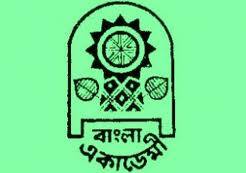About Us
The importance of establishing an organisation for Bengali language was first emphasised by the linguist Muhammad Shahidullah.[1][2] Later, following the Language movement, on 27 April 1952, the All Party National Language Committee decided to demand establishment of an organisation for the promotion of Bengali language. During the 1954 parliamentary elections, the United Front's 21-point manifesto stated that, "The prime minister from the United Front will dedicate the Bardhaman House for...
The importance of establishing an organisation for Bengali language was first emphasised by the linguist Muhammad Shahidullah.[1][2] Later, following the Language movement, on 27 April 1952, the All Party National Language Committee decided to demand establishment of an organisation for the promotion of Bengali language. During the 1954 parliamentary elections, the United Front's 21-point manifesto stated that, "The prime minister from the United Front will dedicate the Bardhaman House for establishing a research center for the Bengali language".Following the election success of the Front, the education minister Syed Azizul Haque placed the order to fulfill this promise.In 1955, the government formed a committee to expedite the process. The committee was composed of leading intellectuals like Muhammad Shahidullah, Qazi Motahar Hossain, S.M. Bhattacharya, W. H. Shadani, and Muhammad Barkatullah. On 3 December 1955, the Chief Minister of East Bengal, Abu Hussain Sarkar, inaugurated the institute. Barkatullah acted as the Special Officer in charge. Later, in 1956, Muhammad Enamul Haque took over as the first director.In 1957, an act of the parliament formally established the funding source and the Government support for the institute.The first book published by the academy was Laili Maznu, an epic by the medieval poet Dawlat Ujir Bahram Khan, and edited by Ahmed Sharif. The first fellow of the academy was the poet Farrukh Ahmed.The publication division was established in early 1957; the research, culture and library divisions and translation division were set in 1958 and 1961 respectively.After the independence of Bangladesh, the director's position was renamed Director General.[3] Mazharul Islam, head of Bangla Department of Rajshahi University, was the first Director General of the institute. On 19 September 2008, a new 8-storied building, containing a 500-capacity auditorium and a 100-capacity seminar room, opened next to the main building.
